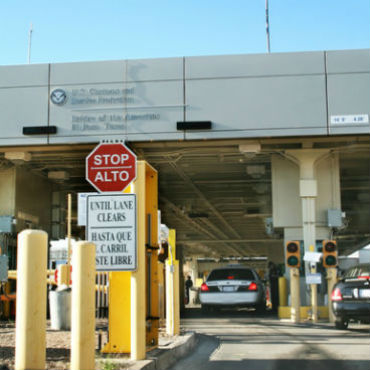Data collection up at ports of entry

CBP said it processed more than 360 million travelers at U.S. air, land and sea ports in fiscal 2013.

Customs and Border Protection is increasing its data-collection efforts at the country's borders and ports. Photo by iodrakon / Shutterstock.com.
Customs and Border Protection officials said the agency's data-collection programs at travel and cargo hubs had gathered millions more records on people and goods in fiscal 2013 than they had in fiscal 2012.
In a year-end summary of its border and port security efforts, CBP said its officers processed more than 102 million international travelers at U.S. airports in 2013, an increase of 4 percent over 2012 numbers. In 2013, CBP officers processed a total of more than 360 million travelers at U.S. air, land and sea ports.
Beyond the raw numbers, CBP is showing a steady increase in its use of interconnected data-collection systems, which is helping it present a fuller picture of activity at borders and other points of entry.
The agency enrolled more than 1 million new members in its Trusted Traveler Programs, composed of the airport-based Global Entry system, the Secure Electronic Network for Travelers Rapid Inspection for those who frequently cross the U.S./Mexico border, Nexus for expedited crossings of the U.S./Canada border, and the Free and Secure Trade program for low-risk shipments entering the United States from Mexico and Canada. The programs expedite the processing of low-risk travelers and shipments through the use of pre-travel background checks.
Membership in the programs stood at more than 2.2 million by the end of the fiscal year, with more than 1 million in Global Entry.
In addition, CBP officials said they processed more than $2.3 trillion in trade and nearly 25 million cargo containers through the nation's ports of entry in fiscal 2013 -- a 1 percent increase from 2012.
The agency credited automation of its Form I-94 Arrival/Departure Record with boosting security and saving an estimated $19 million annually in processing costs. The effort was part of CBP's Resource Optimization Strategy.
CBP is also partnering with the Canada Border Services Agency to electronically share entry information in real time on third-country nationals who cross the U.S./Canada border, under the joint Beyond the Border Action Plan established in 2011.
As a result of the data-exchange program, entry into one country serves as an exit from the other, filling a nagging gap in immigration documentation. According to CBP's report, the two countries have exchanged more than 2 million exit records under the program.
CBP said the effort will help the U.S. and Canada identify people who overstay their legal period of admission, better monitor the departure of people subject to removal orders, and verify that applicants are meeting residency requirements for continued eligibility in immigration programs.
The program's first phase, which began in 2012, enabled the exchange of biographical information -- such as name, country of origin, birth date and gender -- at a limited number of ports of entry. It began at four automated border-crossing/port sites: two Pacific Highway and Peace Arch crossings in British Columbia and Washington state; the bridge that links Lewiston, N.Y., and Queenston, Ontario; and the Rainbow Bridge that connects Niagara Falls, N.Y., with Niagara Falls, Ontario. Those ports and crossings typically have heavy traffic, especially among third-country nationals.
The second phase of the plan began in June 2013 and expanded the information exchange to include all major land-border crossings between the two countries.


